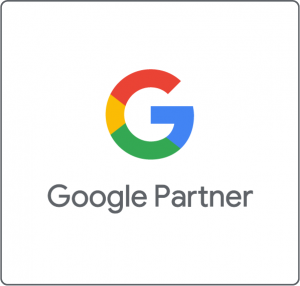These new improvements on the Facebook Ad side are an attempt to fill that reporting and measurement gap while still maintaining user privacy.
“Apple’s advertising business has more than tripled its market share in the six months after it introduced privacy changes to iPhones that obstructed rivals, including Facebook and Google, from targeting ads at consumers,” tweeted Patrick McGee, a correspondent for the Financial Times. Not only has this change affected Facebook, but it’s also affected the advertisers who promote their products and services there.
Today Facebook announced new products and features to help combat this lack of data for advertisers, including an easier way to connect to the Simplified Conversions API and new features for Aggregated Event Measurement.
Aggregated Event Measurement for iOS14 users. “We’re improving campaign reporting for iOS 14+ users through Aggregated Event Measurement (AEM), making it clearer which ads are responsible for conversions, like a purchase or app install, while continuing to honor the privacy and tracking preferences people make on Facebook,” said Graham Mudd, VP of Product Marketing at Facebook in the announcement.
View-through attribution by default. The first update is the enablement of view-through attribution by default for any new web campaigns with web events. “This will provide an understanding of the types of users who may see an ad on Facebook and later make a conversion, without clicking on the ad,” said Mudd. If this default doesn’t work for your business type, you will be able to choose another option before initiating the campaign.
Consideration of all associated URLs for a business. Facebook will also be updating AEM to consider all advertiser-associated URLs that auto-redirect. Scenarios where this might be useful include “when a user clicks on an ad and lands on jasper.com, but later purchases through jasper.com.uk. Also, for businesses that do not own the top-level websites that their advertisements direct to.”
Aggregated Event Measurement for App (App AEM). Finally, Facebook is rolling out AEM for the apps. “This will strengthen your ability to measure actions that people take while using your apps, like making a purchase or achieving a new level in a game,” added Mudd. This new addition can help with re-engagement campaigns with in-app destinations. “App AEM will allow you to use campaign optimizations like Conversion or Value Optimization to redirect users in-app and drive business results.”
What is AEM? “Facebook’s Aggregated Event Measurement is a protocol that allows for measurement of web events from iOS 14 users. Aggregated Event Measurement limits domains to 8 conversion events that can be prioritized for conversion optimization,” according to Facebook’s help documentation. AEM helps advertisers determine and measure the conversion actions they deem most important. Here’s the example Facebook offers:
If a business called Feroldi’s has 3 pixels, let’s say Pixel A, Pixel B and Pixel C, then Feroldi’s will need to choose which 8 events they want to include in their event configuration between the 3 pixels. If they choose Pixel A’s purchase event, Pixel B’s purchase event and Pixel C’s purchase event, that would count as 3 of the 8 events. After they choose their events, they would need to prioritize them.
Other Facebook ads updates. Along with big changes around Aggregated Event Measurement, Facebook included two more advertiser updates in their announcements:
- New SKAdNetwork campaign capabilities: “We will enable view-through conversion attribution for iOS 14+ Mobile App Install campaigns that rely on data received from Apple’s SKAdNetwork (SKAN) API for measurement of conversion events in our reporting surfaces.” This update means advertisers can get a more complete view of full conversion paths.
- Simplified Conversions API setup: “The Conversions API creates a simple and reliable connection between your marketing data and the Facebook systems that help businesses optimize ad targeting, decrease cost per action and measure results.” The new API makes setup even easier so more advertisers can take advantage of the benefits of the a holistic data view.
Why we care. Many advertisers are feeling the crunch after Apple’s app-tracking privacy initiative began earlier this year. The missing data means campaigns aren’t optimized as well as they used to be and many advertisers are losing conversions. These new improvements on the Facebook Ad side are an attempt to fill that reporting and measurement gap while still maintaining user privacy.




